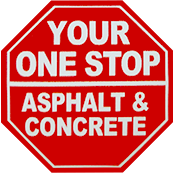During the winter season, one of the most common causes of concrete damage is constant exposure to salt. Untreated salt damage can lead to corrosion and deterioration that can cause bumps and potholes in your concrete. However, there are three easy ways you can prevent concrete damage from salt as well as costly concrete repairs in the future.
How does salt damage concrete?
Concrete is a porous material that can easily absorb water, thus making it vulnerable to salt damage. Salt lowers the pH levels in concrete that harm the structure by allowing additional chemicals, water, and substances to enter your concrete. It also adds chlorine to concrete, which is one of the main factors in concrete corrosion.
1. Avoid salt altogether
While it’s common to use salt on slippery surfaces to melt snow or ice, this actually does more harm than good to your concrete. Instead, you should look for better alternatives such as sand or coffee grinds. Never use salt on your concrete if you want to prevent bumps, holes, and even cracks on your surface.
2. Seal your concrete
Sealing your concrete will protect it from deterioration caused by abrasion and salt de-icing. There are many different types of sealers, but the most common is the silane siloxane sealer, which is used to prevent deterioration caused by freezing water that makes its way onto your concrete. If this occurs, contact our team as soon as possible to determine which sealer is best for your concrete.
3. Use a protective coating
Protective coatings will prevent all deterioration caused by salt and enhance your concrete’s aesthetic appeal. A few examples of protective coatings are vinyl coatings, polyester coatings, and epoxy coatings. They will act as a shield between your concrete and harsh winter weather to protect it from snow, ice, freezing and thawing, abrasion, UV rays, and chemical spills.
If you have salt damage from past winters, or questions regarding how to best protect your concrete from salt, contact us for an estimate today!

